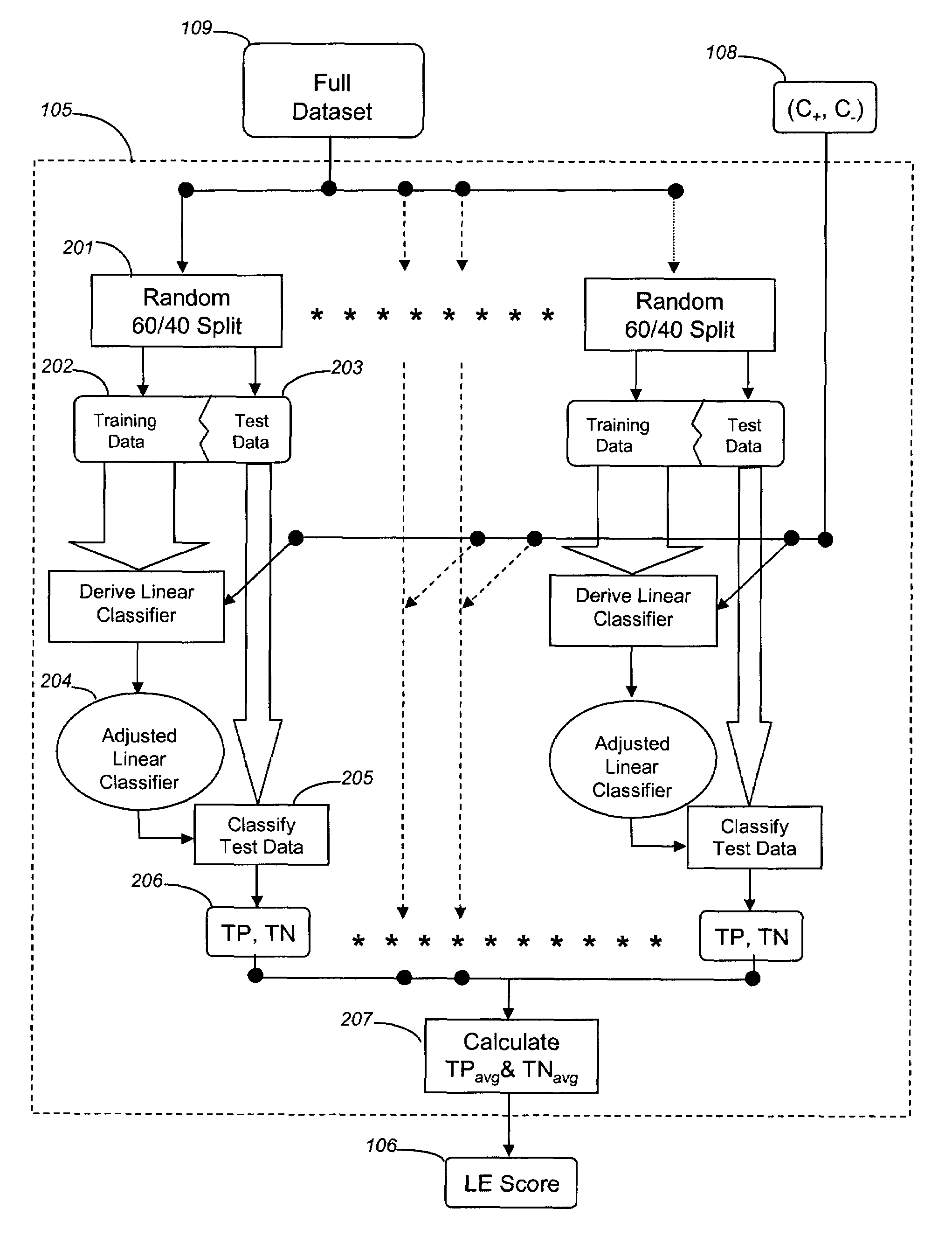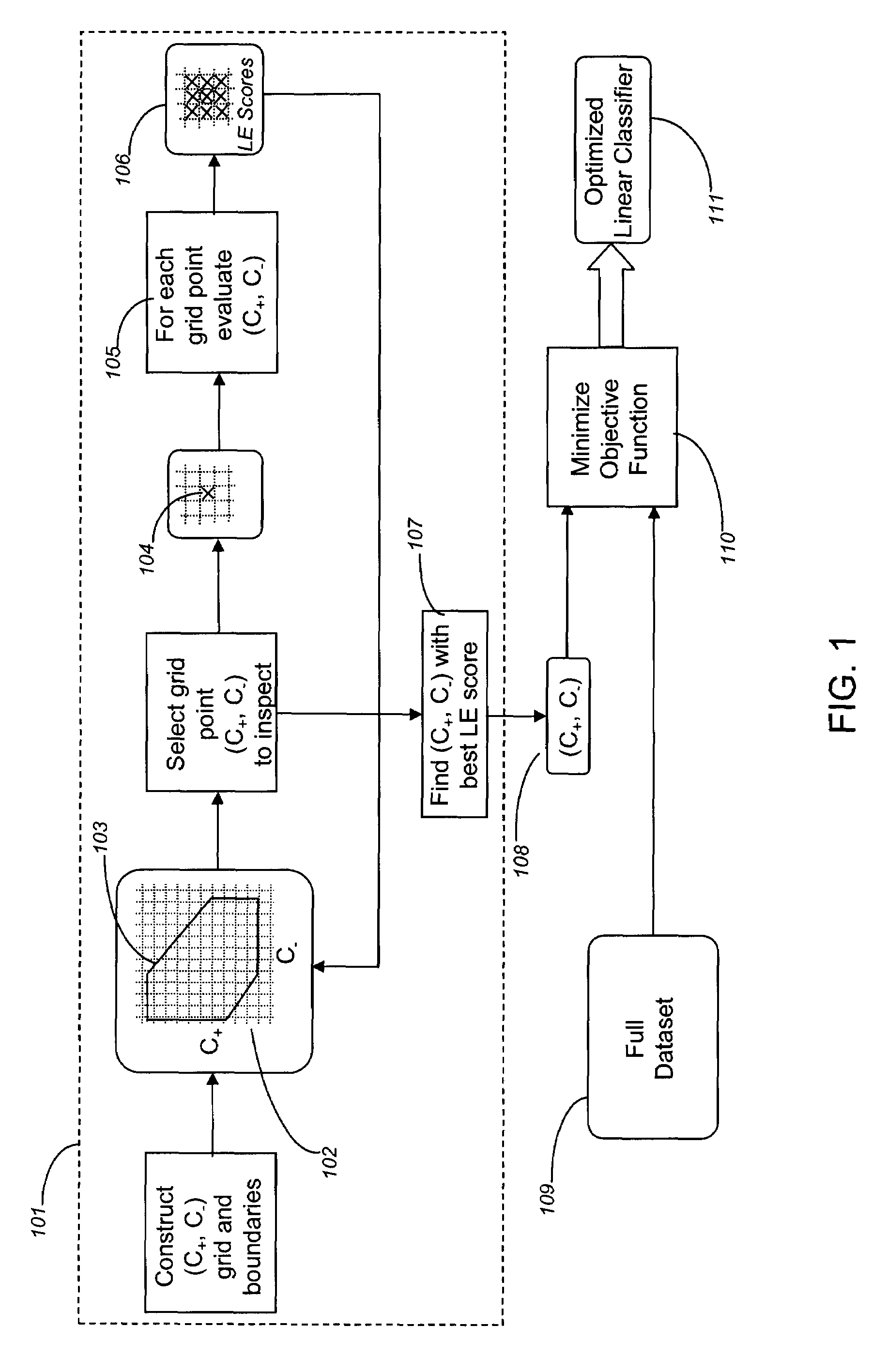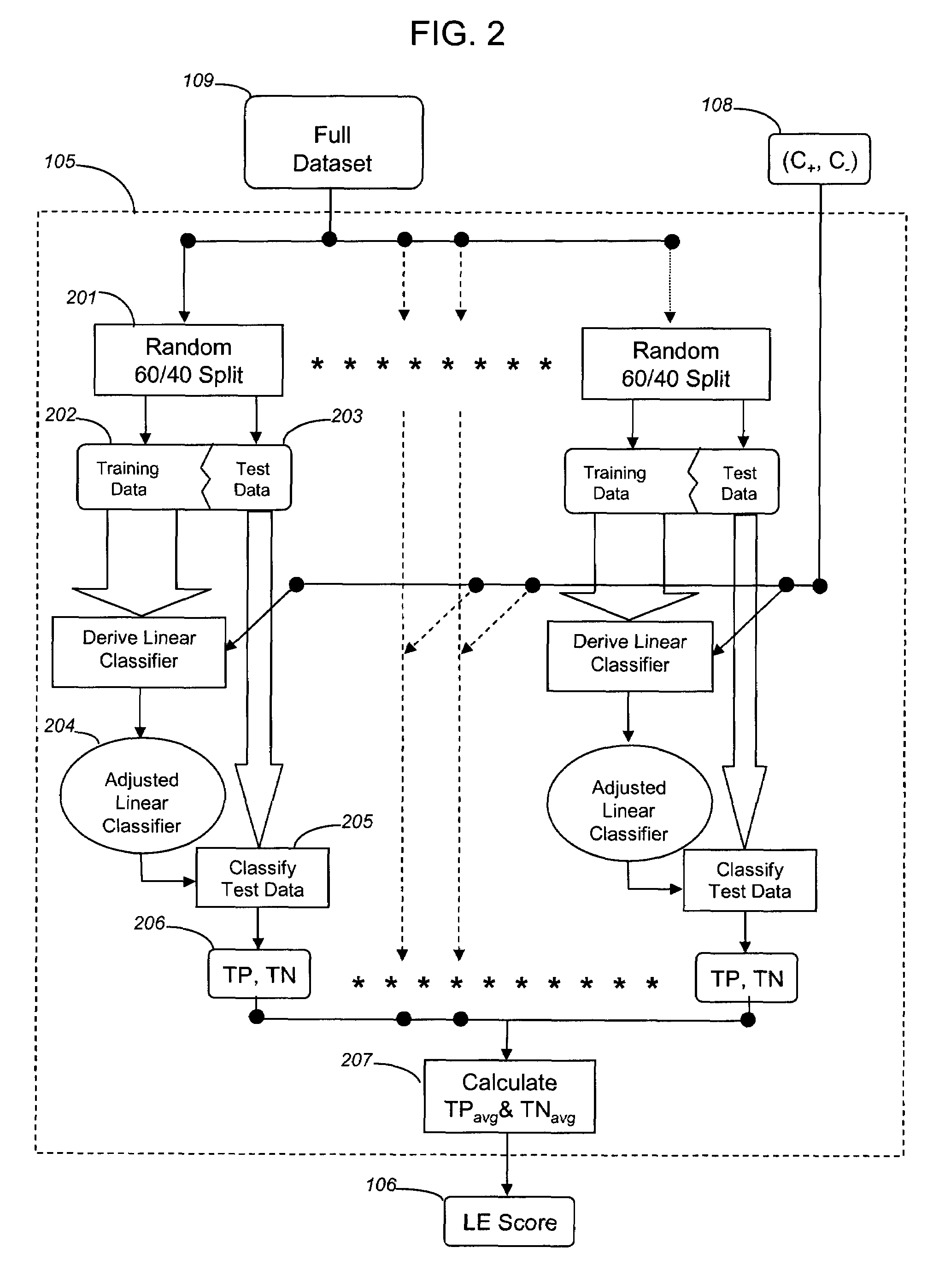Adjusted sparse linear programming method for classifying multi-dimensional biological data
a multi-dimensional biological data and programming method technology, applied in the field of adjusted sparse linear programming method for classifying multi-dimensional biological data, can solve the problem of low accuracy of classifiers when confronted with actual test data
- Summary
- Abstract
- Description
- Claims
- Application Information
AI Technical Summary
Benefits of technology
Problems solved by technology
Method used
Image
Examples
example 1
Construction of Chemogenomic Reference Database (DrugMatrix™)
[0122]This example illustrates the construction of a large multivariate chemogenomic dataset based on DNA microarray analysis of rat tissues from over 580 different in vivo compound treatments. This dataset was used to generate 168 non-redundant chemogenomic liver signatures using either the SPLP or A-SPLP methodology as described in Examples 2 and 3.
[0123]The detailed description of the construction of this chemogenomic dataset is described in Examples 1 and 2 of Published U.S. Pat. Appl. No. 2005 / 0060102 A1, published Mar. 17, 2005, which is hereby incorporated by reference for all purposes. Briefly, in vivo short-term repeat dose rat studies were conducted on over 580 test compounds, including marketed and withdrawn drugs, environmental and industrial toxicants, and standard biochemical reagents. Rats (three per group) were dosed daily at either a low or high dose. The low dose was an efficacious dose estimated from the...
example 2
Classification of Gene Expression Data Using SPLP
[0127]Numerical experiments were performed on data from a chemogenomic gene expression dataset made according to Example 1. The objective of the numerical experiments was to derive sparse classifiers (i.e., classifiers comprising a relatively small number of genes) that were useful for distinguishing three particular classes of compounds from other compounds with good performance. The three compound classes for which classifiers were derived are: fibrates, statins and azoles.
[0128]The gene expression data was assembled into a training set based on a matrix X and a matrix Σ. The matrix X included log10 ratios of gene expression levels relative to baseline gene expression levels for n=8565 genes and N=194 compounds. The matrix Σ included standard deviations associated with 3 measurements for each compound.
[0129]Three different labeling vectors were used corresponding to three particular classes of compounds: (1) the fibrate class of com...
example 3
Derivation and Optimization of Classifiers Using A-SPLP and SPLP Algorithms
[0131]This example describes the use of the A-SPLP methodology, including a modified hill-climbing algorithm, for generating optimal sparse linear classifiers (i.e., signatures) from a chemogenomic dataset. In order to better illustrate the advantages of the A-SPLP methodology, the example also describes the derivation of sparse linear classifiers for the same chemogenomic dataset using the SPLP methodology.
[0132]Comparison of Liver Signatures Derived with the A-SPLP and SPLP Algorithms
[0133]Using the above-described A-SPLP and SPLP formulations, a total of 168 non-redundant chemogenomic liver signatures were derived and optimized from a chemogenomic dataset prepared as described in Example 1. The average characteristics across all 168 signatures derived using the two algorithms are shown in Table 2.
[0134]
TABLE 2Characteristics of 168 Chemogenomic SignaturesDerived Using the SPLP and A-SPLPSPLPA-SPLPAvg. Sens...
PUM
 Login to View More
Login to View More Abstract
Description
Claims
Application Information
 Login to View More
Login to View More - R&D
- Intellectual Property
- Life Sciences
- Materials
- Tech Scout
- Unparalleled Data Quality
- Higher Quality Content
- 60% Fewer Hallucinations
Browse by: Latest US Patents, China's latest patents, Technical Efficacy Thesaurus, Application Domain, Technology Topic, Popular Technical Reports.
© 2025 PatSnap. All rights reserved.Legal|Privacy policy|Modern Slavery Act Transparency Statement|Sitemap|About US| Contact US: help@patsnap.com



